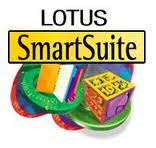| 我们致力本地化我们在尽可能多的语言的网站越好,然而这一页是机器使用谷歌翻译翻译。 | 关闭 |
-
-
产品
-
资源
-
支持
-
公司
-
登录
-
.adx 文件扩展名
开发商: N/A文件类型: Approach Index File你在这里因为你有,有一个文件扩展名结尾的文件 .adx. 文件与文件扩展名 .adx 只能通过特定的应用程序推出。这有可能是 .adx 文件是数据文件,而不是文件或媒体,这意味着他们并不是在所有观看。什么是一 .adx 文件?
数据文件被分类,因为存储在数据文件中的内容的性质,例如,与附加了切除扩展名的文件是这些数据文件的示例。也有很多类型的数据文件,并切除的文件被分类为数据库的参考文件。这是因为相关的应用程序使用存储在该数据.adx文件当用户访问集成到支持程序对应的特征。也被称为方法索引文件,这些文件ADX由Lotus方法软件创建的。在这些ADX文件的Lotus方法项目输出文件存储相关的索引信息的关系数据库。用户可以安装Lotus方法应用到他们的基于Microsoft Windows的系统,以实现对这些ADX文件的支持。莲花软件的方法是捆绑在一起的莲花智能套件等生产工具。同时将包含在Lotus智能套件中的所有其他应用程序由IBM(国际商业机器)开发的Lotus方法的软件。如何打开 .adx 文件?
推出 .adx 文件,或者你的电脑上的任何其他文件,双击它。如果你的文件关联的设置是否正确,这意味着应用程序来打开你的 .adx 文件将其打开。这是可能的,你可能需要下载或购买正确的应用程序。这也有可能是你有正确的应用程序在PC上,但 .adx 文件还没有与它相关联。在这种情况下,当您尝试打开一个 .adx 文件,你可以告诉Windows的应用程序是正确的该文件。从这时起,打开 .adx 文件将打开正确的应用程序。 点击这里修复.adx文件关联错误打开一个应用程序 .adx 文件
 IBM Lotus Approach (part of Lotus SmartSuite)
IBM Lotus Approach (part of Lotus SmartSuite)IBM Lotus Approach (part of Lotus SmartSuite)
Lotus Approach is for professionals who need to analyze, report and manage business information. It offers breakthrough usability, connectivity, outstanding power, analysis capabilities and cross-product integration. It is integrated with Lotus Notes to deliver transparent, fast access to Notes database files formatted as NSF. You can distribute forms, notes, worksheets, mailing labels, charts and crosstabs through Notes mail. Productivity features of Lotus Approach include notes normalizer, dialog editor, Notes R5 compatibility, save to APT file, DB2 compatibility, queries, action bar, infobox, SmartMaster applications, find assistant, PowerClick Reportwriter, crosstabs, charts and drill-down. Internet capabilities include save as [APT file] to the intranet/Internet, automatic generation of HTML pages, publish to the intranet/Internet and one-click Internet link. Connectivity features cover Notes R4 PowerKey, fully transactional database support, DB2 BLOB support, support for SQL back end error message, DB2 QMF support, high-performance data access, pass-through SQL and OLE [object linking and embedding]. Customization solutions include LotusScript control of sort and find functions, automated Approach and LotusScript macro generation and LotusScript programmability. IBM Lotus Smart Suite
IBM Lotus Smart SuiteIBM Lotus Smart Suite
IBM Lotus Smart Suite enables you to convert formats of your files from earlier versions of Lotus SmartSuite and other applications such as Microsoft Office Filters that allows document changes between Microsoft Excel and Lotus 1-2-3, PowerPoint and Freelance Graphics, and Microsoft Word and Word Pro. It provides Windows XP support, InstallShield for Windows Installer and desktop applications co-existence. It has enhanced Microsoft Office compatibility including MS WordArt. It enables easy and quick customizable installation using MSI [Microsoft Software Installer]. It has less downtime, and administrators will experience fewer support calls. These improvements will help reduce desk inquiries and total cost of ownership. It caters to the needs of both the enterprise and the users. It covers desktop productivity functions that make it cost-effective. It increases employee productivity. It enables exchange of documents between different applications.提醒一句
要小心,不要重命名扩展 .adx 文件,或任何其他文件。这不会更改文件类型。只有特殊的转换软件可以从一个文件类型更改一个文件到另一个。什么是文件扩展名?
文件扩展名是一组三个或四个字符在文件名的末尾,在这种情况下, .adx. 文件扩展名告诉你它是什么类型的文件,并告诉Windows哪些程序可以打开它。窗户经常关联一个默认程序的每个文件的扩展名,这样,当你双击该文件,程序会自动启动。当该程序不再是您的PC上,有时可以得到一个错误,当您试图打开相关的文件。发表评论

